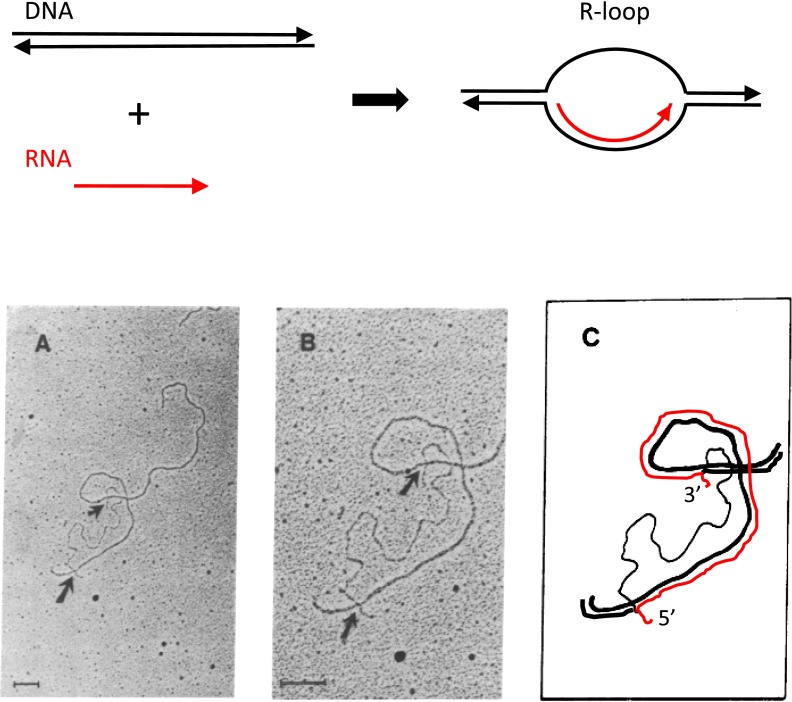Fig. 1.
Single-stranded RNA tails observed at both 5′ and 3′ ends of R-loops of Ad2 hexon mRNA and the Ad2 HindIII A fragment. (Upper) R-loop formation near the temperature of DNA melting in 70% formamide, 0.4 M NaCl. Arrowheads indicate 3′ ends of strands. Adapted from ref. 10. (Lower) R-loop in Ad2 HindIII A restriction fragment formed with purified hexon mRNA. (A) EM of R-loop showing all of the Hind III A DNA fragment with an R-loop at the lower end. (B) Higher magnification of the R-loop. In A and B, the upper arrow points to a single-stranded region at the 3′ end of the RNA, and the bottom arrow points to a single-stranded region at the 5′ end. In these formamide spreads, single-stranded DNA appears thinner and has a more irregular path than double-stranded DNA or RNA-DNA hybrid, which appear similar. (C) Interpretation of EM in B. The hexon mRNA is represented in red and each strand of the Hind III A DNA in black. Regions where the red RNA is parallel to the black DNA strand represent base paired regions of RNA-DNA hybrid. Regions where the two black DNA strands are parallel represent DNA-DNA duplex. A, B, and C adapted from ref. 12.

